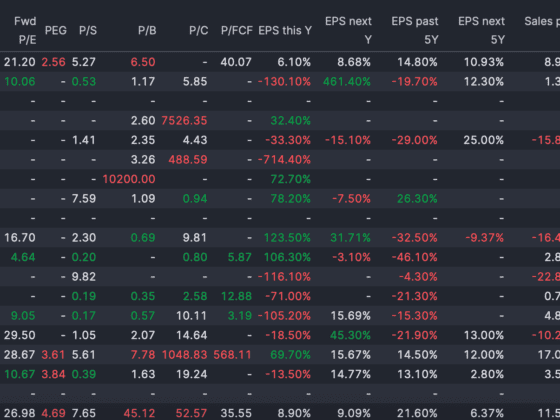Ever wondered how senior stock traders nail swing trading? Dive into this guide unveiling a strategic roadmap, from defining your approach to mastering stock screeners. Discover precise criteria, technical analysis tactics, and savvy risk management. Unveil the secrets to profit in short to medium-term market trends. Ready to elevate your swing trading game? Let’s unlock success together!
As a senior stock trader involved in swing trading, your goal is to identify short to medium-term opportunities for profit based on market trends and price movements. Here’s an outline of the process, including the use of stock screeners and specific criteria for stock selection:
1. Define Your Strategy:
- Clearly outline your swing trading strategy, including your risk tolerance, profit goals, and the time frame for holding positions. Determine whether you’ll focus on specific sectors, industries, or types of stocks.
2. Select a Stock Screener:
- Choose a stock screener tool that allows you to filter and screen stocks based on various criteria. Some popular screeners include Finviz, TradingView, and Thinkorswim.
3. Define Criteria for Stock Selection:
- Establish specific criteria that align with your swing trading strategy. Consider the following factors:
- Volatility: Look for stocks with a history of price fluctuations, as swing trading profits from short to medium-term price movements.
- Liquidity: Choose stocks with sufficient trading volume to ensure easy entry and exit.
- Trend Analysis: Identify stocks in an uptrend or downtrend using technical analysis tools like moving averages, trendlines, and chart patterns.
- Catalysts: Consider upcoming events or news that might act as catalysts for price movement.
- Relative Strength: Evaluate a stock’s performance compared to its sector or the overall market.
- Fundamental Analysis: While swing trading is primarily technical, consider basic fundamental factors, such as earnings reports, to support your decisions.
4. Use the Stock Screener:
- Apply your defined criteria to filter stocks using the chosen stock screener. For example:
- Set a minimum average trading volume.
- Specify price range and market capitalization.
- Filter for stocks showing recent price changes or forming specific technical patterns.
5. Review Technical Analysis:
- Conduct a detailed technical analysis of the shortlisted stocks.
- Analyze chart patterns (e.g., head and shoulders, triangles) for potential trend reversals.
- Use indicators like RSI, MACD, and Stochastic Oscillator to identify overbought or oversold conditions.
- Confirm trend direction using moving averages.

6. Check for Catalysts:
- Investigate upcoming events, earnings reports, or news that might impact the stock’s price during your intended holding period.
7. Risk Management:
- Set stop-loss orders to manage risk and protect capital.
- Determine position sizes based on your risk tolerance and the stock’s volatility.
8. Monitor Positions:
- Regularly monitor the stocks in your portfolio, staying informed about market conditions and any changes in the stocks’ fundamentals.
9. Exit Strategy:
- Define clear exit criteria, including profit targets and conditions that would prompt you to exit a trade earlier than planned.
10. Adapt and Learn:
- Continuously evaluate and adapt your strategy based on your trading results and the evolving market conditions.
- Learn from both successful and unsuccessful trades.
Remember, successful swing trading requires a disciplined approach, continuous learning, and the ability to adapt to changing market dynamics. Always stay informed about market news and events that might impact your trades.





